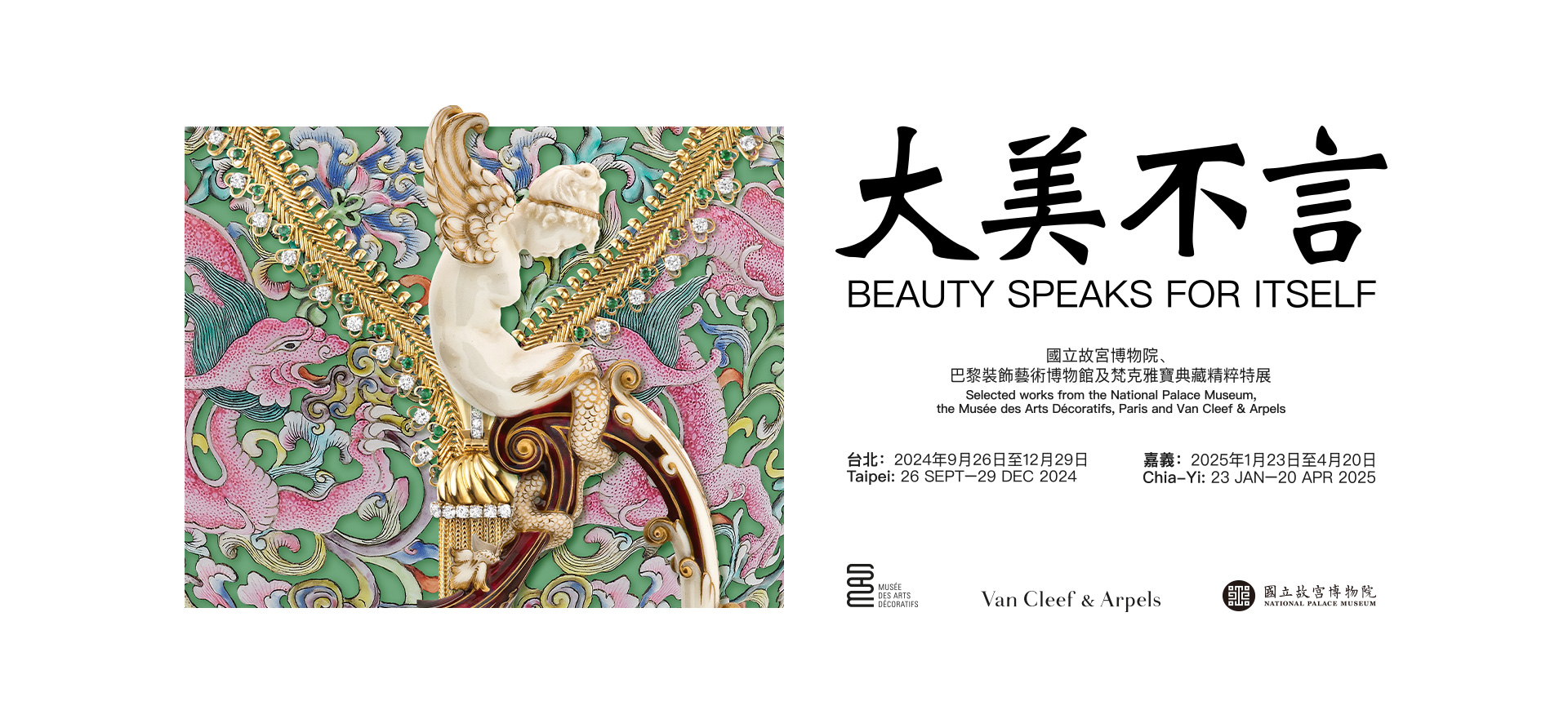Fantasy
In the East or the West alike, dreams have given rise to various myths. These legends are filled with realms of fantasy, surrealism, and extraordinary imagination. Within these stories reside unique and symbolic divine animals and other mythical or hybrid creatures, evolving with eras, cultures, knowledge, and beliefs. Artists have interpreted these marvelous or auspicious beings through a variety of colors, shapes, materials, symbols, and techniques.
Certain patterns have different meanings in various cultures. In the West, from the Middle Ages onward, dragons were seen as ferocious beasts threatening human existence, while in Eastern culture, dragons have long been believed to bring wealth and good fortune.
Furthermore, decorative arts have also drawn inspiration from mysterious realms such as the deep ocean, expressing idealistic or awe-inspiring visions of the world.
—Highlight Pieces—
-
Copper Ewer with Handle and Phoenix Decoration in Painted Enamels
Qing dynasty, Qianlong reign (1736 –1795)
Copper
National Palace MuseumYou are now looking at a painted enameled bronze pitcher with an S-shaped handle. It has a flat, rounded lid, which resembles a bamboo hat, topped with a button-shaped knob. Take a closer look at the decoration:
The pitcher is covered almost entirely with a white glaze base and the interior is glazed in light blue. The white base coat is also painted with other brightly-colored glazes.
On the button-shaped knob on the lid, there is a blue painted tuanshou (團壽), a circular motif representing longevity and completeness.
The base of the knob is decorated with leaves and a ruyi (如意) — an auspicious cloud pattern, symbolizing the fulfilment of one’s desires.
There is a ring of flowers and plants around the knob featuring daylilies, peonies, and camellias.
More floral motifs have been used to embellish the front of the handle and spout.
On the body of the pitcher you can see a pair of phoenixes,which have been painted in five colors using the wucai (五彩) technique.
In the pitcher’s high base, there is a mid-section shaped like a flattened ball. It is decorated with more auspicious cloud motifs and there is scrollwork on both the top and bottom halves.
The traditional, supernatural motif of the phoenix is the focus of this creation, and it lends the piece a visual sense of poise and elegance. The pitcher’s shape and decorative style both adhere to a Western art-and-crafts tradition. The piece was probably produced in Guangzhou in the eighteenth century.
-
Bird clip and Walska pendant
1971
Yellow gold, emeralds, sapphire, yellow and white diamonds
Van Cleef & Arpels CollectionThis brooch depicts a bird with outstretched wings and a plumed tail. He is made of yellow gold and set with various gems. If you look closely you can see that:
His body and head are encrusted with yellow diamonds;
The crest on top of his head features a single engraved emerald;
His wings and tail are set with diamond paved feathers interspersed with emeralds;Overlaping subtly, his feathers lend the bird a sense of volume and movement, and give the impression that he is really flying away;A cabochon-cut sapphire highlights the heart of his body
Last, but not least, the bird is carrying a rare 96.62-carat yellow diamond in his beak. Thanks to his briolette-cut, the stone glitters brightly from every angle.
In addition to these vivid gems, the brooch’s transformability also makes it exceptional:
Hidden clasps and discreet mechanisms allow the bird's wings to be detached and become a pair of earrings;
the tail can be turned into a clip;
and the distinctive yellow diamond can also be worn separately as a pendant.That is how the diamond’s previous owner, American opera singer Ganna Walska (1887-1984), originally wore the gem.
Highly transformable pieces like this are a testament to the ingenious work of Van Cleef & Arpels’ craftsmen, and have been a central signature in the Maison’s creative history since the 1920s.
-
Part of an imperial ceremonial gown (longpao)
Qing dynasty, 1st half of the 18th century
Silk tapestry (kesi) and metallic thread
Musée des Arts DécoratifsYou are now looking at the main component of a garment known as a “dragon robe” (longpao, 龍袍) or “python robe” (mangpao, 蟒袍), which was semi-official, festive court dress or jifu (吉服).
When worn, the elongated, silk satin sleeves tapered towards the ends to form a horseshoe shape at the top of the hands. A wide trim was added around the collar, and ran along the top of the fold where you can see the large, undecorated band.
The decoration on this garment is typical of imperial dress and the motifs used include nine dragons moving amongst the clouds. You can also see the “Twelve Ornaments”:
• on the collar are the moon, the sun, Ursa Major, and a mountain;
• the front is decorated with the character for happiness (fu, 福), two dragons, an axe, and a water plant;
• and adorning the back of the garment, you can see a pair of sacrificial cups, fire, millet grains, and a pheasant.From 1759, the Qianlong Emperor imposed a dress code that specified which colours and motifs people of each rank could wear at court. The imperial symbols and yellow lining indicate that this garment was made for a member of the imperial family.
Court robes were often made from embroidered silk satin or gauze.
This particular piece is of exceptional quality because it is made entirely of silk tapestry or kesi (緙絲). The motifs are remarkably fine; and were sewn in silver and gold thread in three colours. The kesi technique was brought to China from Sogdiana during the Tang dynasty. It flourished during the Song dynasty but reached its zenith under the Qing, as you can see from this piece.


